#Indian spirituality
Explore tagged Tumblr posts
Text
Maharaj: True happiness cannot be found in things that change and pass away. Pleasure and pain alternate inexorably. Happiness comes from the self and can be found in the self only. Find your real self (svarupa) and all else will come with it.
Questioner: If my real self is peace and love, why is it so restless?
Maharaj: It is not your real being that is restless, but its reflection in the mind appears restless because the mind is restless. It is just like the reflection of the moon in the water stirred by the wind.
—Sri Nisargadatta Maharaj, I Am That
#sri nisargadatta maharaj#Maharaj#philosophy#philosopher#asian philosophy#indian spirituality#quotes#literature quotes#philosophy quotes#i am that#maurice frydman#nonduality#nondualism#non duality#non dualism
30 notes
·
View notes
Text
Exploring Uttarakhand: Nature, Spirituality, and Adventure
Hello, fellow travelers! I’m Dev from TravelWithDev.co.in, and I’d love to share a glimpse into my journey through Uttarakhand, the mystical “Land of Gods.” This state is truly magical—where nature, spirituality, and adventure unite.
In Rishikesh and Haridwar, the spiritual energy is palpable. Standing by the Ganges during the evening aarti, surrounded by chanting and floating lamps, I felt a calm that’s hard to describe.
Then there’s Auli, a paradise for adventure seekers and home to some of the best skiing in India. Trekking the Valley of Flowers was another unforgettable experience—a valley filled with vibrant wildflowers, surrounded by majestic Himalayan peaks.
In Nainital, I found serenity by Naini Lake, and from viewpoints like Snow View, I saw the beauty of the Himalayas unfold. Jim Corbett National Park brought the thrill of wildlife with sightings of deer, elephants, and, if you’re lucky, a tiger.
Uttarakhand is more than a destination; it’s a place that fills you with wonder and peace. Whether you seek adventure, spiritual renewal, or a deep connection with nature, Uttarakhand has it all.
Ready to Discover Uttarakhand?
🌄 Plan your journey today and immerse yourself in the natural beauty, spiritual richness, and thrilling adventures of Uttarakhand. Visit TravelWithDev.co.in for more tips, itineraries, and travel insights. Let’s make your next trip unforgettable!
0 notes
Text
Ramayana No. 11: The Beginning and the End—Understanding the First Canto of the Gita Press Ramayana
As I begin my journey through the Gita Press edition of the Ramayana, I find myself immediately struck by the structure of the first canto. Within just a few verses, the entire epic is laid out before the reader—Rama’s exile, his defeat of Ravana, the rescue of Sita, and his triumphant return to Ayodhya where he reigns as king. It’s a “happily ever after” summary that seems to condense the entire…
#Ancient Texts#Ayodhya#comparative religion#Debroy translation#Dharma#Eastern spirituality.#epic literature#Gita Press#Hindu epics#Hindu Philosophy#Hindu teachings#Indian culture#Indian mythology#Indian spirituality#moral teachings#mythological stories#Narada#Rama#Ramayana#Ravana#religious studies#Sanskrit literature#Sita#spiritual journey#spiritual wisdom#Valmiki Ramayana#Vedic literature
0 notes
Text
Celebrating Mangala Gauri: A Timeless Tradition
Mangala Gauri Puja: A cherished Maharashtrian tradition celebrating marital bliss and cultural heritage.
Mangala Gauri Puja, also known as Mangalagour Vrat, is a cherished tradition observed by newly married women for the first five years of their marriage. Celebrated across India, it holds special significance in Maharashtra. The Pahili (first) Mangala Gauri celebration is particularly important for new brides. The students of Om Sadafuli Yog Varga New Panvel celebrated this event with full…
#cultural heritage#devotional practices#family unity#Goddess Gauri#Goddess Parvati#Hindu festivals#Hindu goddesses#Hindu rituals#Hindu spirituality#Indian celebrations#Indian culture#Indian customs#Indian festivals#Indian festivities#Indian heritage#Indian mythology#Indian rituals#Indian spirituality#Indian traditions#Indian women#Maharashtrian tradition#Maharashtrian women#Mangala Gauri Puja#Mangala Gauri Vrat#Mangalafaur Vrat#marital bliss#Pahili Mangala Gauri#panvel#religious festivals#religious practices
0 notes
Text
WHY A GROUP OF YOUNG MEN CHUCKED ME OUT
WHY YOUNG Spiritualists chucked me out My young friend, Dr. Shankar, wrote to me: “I want you to join a WhatsApp group called Young Thinkers. They are very interesting. You’d like their short but brainy blogs on the WhatsApp.” ” Beautiful, and why not,” I wrote back, “I could even hone my own blogging techniques by reading their WhatsApp posts.” . Almost immediately, came a long passage of…

View On WordPress
0 notes
Text
Celebrating Holi: The Festival of Colors
Holi, known as the Festival of Colors, is a vibrant celebration in Indian culture. It signifies the triumph of good over evil and the arrival of spring. The festival fosters unity, transcending social barriers. Happy Celebrating!
In the vibrant tapestry of Indian culture, few festivals are as exuberant and joyous as Holi. Known as the Festival of Colors, Holi heralds the arrival of spring and celebrates the triumph of good over evil, love, and the renewal of life. Let us immerse ourselves in the kaleidoscope of colors and the spirit of unity and festivity that define this beloved festival. A Riot of Colors: Holi is a…
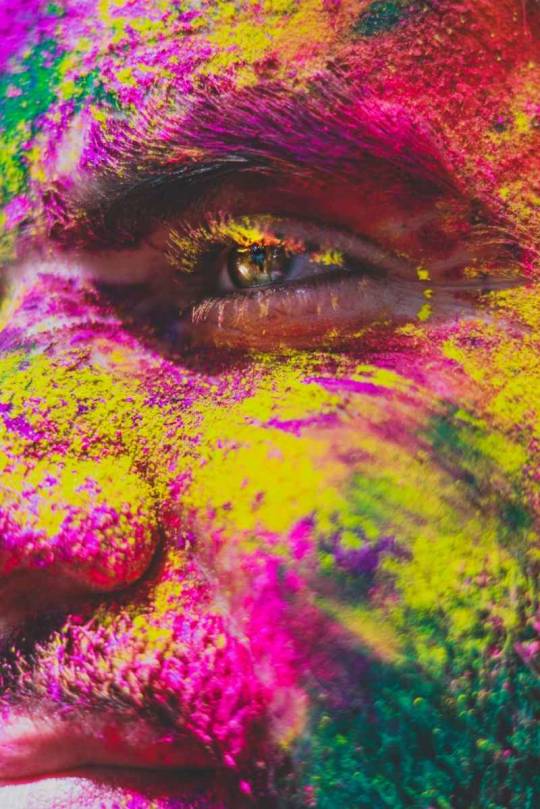
View On WordPress
0 notes
Text
The Luminous Path
Shaktipat and Darshan in the Quest for EnlightenmentIn the rich tapestry of spiritual traditions, the concepts of Shaktipat and Darshan emerge as profound mechanisms of grace, each offering a unique conduit to the divine. These terms are often encountered in the lexicon of Indian spirituality, particularly within the paths of yoga and tantra, where the pursuit of enlightenment takes a form as…

View On WordPress
#Consciousness#Darshan#Divine Grace#Divine Intervention#Enlightenment#Guru#Indian Spirituality#liberation#mysticism#Sacred Practices#Shaktipat#spiritual awakening#Tantra#yoga
1 note
·
View note
Text
Anyone who is interested in Indian spirituality needs to check out Dhieyo.
he has a hindi channel & an english one
0 notes
Text
“[T]he desire for bliss creates pain. Thus bliss becomes the seed of pain. The entire universe of pain is born of desire. Give up the desire for pleasure and you will not even know what pain is.”
–Sri Nisargadatta Maharaj, I Am That
#Sri Nisargadatta Maharaj#Nisargadatta#nondualism#nonduality#indian philosophy#indian spirituality#Nisarga yoga#guru#spirituality#philosophy#asian philosophy#I am that#Maurice frydman
16 notes
·
View notes
Text
Emerald Spectacles from India, c. 1620-1660 CE: the lenses of these spectacles were cut from a single 300-carat emerald, and it was believed that they possessed mystical properties

These eyeglasses are also known by the name "Astaneh-e ferdaws," meaning "Gate of Paradise," based on the symbolic associations between the color green and the concept of spiritual salvation/Paradise. That symbolism (which is rooted in Islamic tradition) was especially popular in Mughal-era India, where the spectacles were made.

The lenses were crafted from two thin slices of the same emerald. Together, the lenses have a combined weight of about 27 carats, but given the precision, size, and shape of each lens, experts believe that the original emerald likely weighed in excess of 300 carats (more than sixty grams) before it was cleaved down in order to produce the lenses. The emerald was sourced from a mine in Muzo, Colombia, and it was then transported across the Atlantic by Spanish or Portuguese merchants.
Each lens is encircled by a series of rose-cut diamonds, which run along an ornate frame made of gold and silver. The diamond-studded frame was added in the 1890s, when the original prince-nez design was fitted with more modern frames.
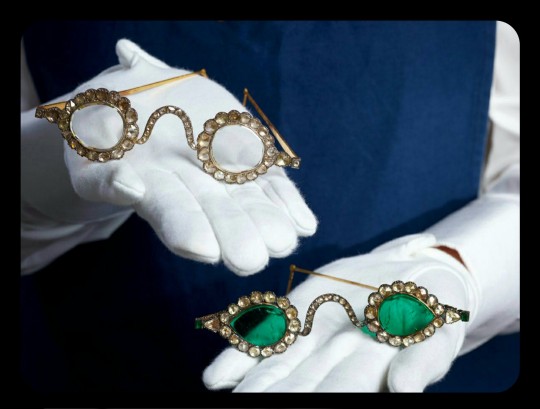
The emerald eyeglasses have long been paired with a second set of spectacles, and they were almost certainly commissioned by the same patron. This second pair is known as "Halqeh-e nur," or the "Halo of Light."
The Halo of Light features lenses that were made from slices of diamond. The diamond lenses were cleaved from a single stone, just like the emerald lenses, with the diamond itself being sourced from a mine in Southern India. It's estimated that the original, uncut diamond would have weighed about 200-300 carats, which would make it one of the largest uncut diamonds ever found.

The lenses are so clear and so smoothly cut that it sometimes looks like they're not even there.
Both sets of spectacles date back to the mid-1600s, and it's generally believed that they were commissioned by a Mughal emperor or prince. The identity of that person is still a bit of a mystery, but it has been widely speculated that the patron was Shah Jahan -- the Mughal ruler who famously commissioned the Taj Mahal after the death of his wife, Mumtaz Mahal. Shah Jahan did rule as the Mughal emperor from about 1628 to 1658.
The emerald and diamond lenses may have been chosen for symbolic, sentimental, and/or cultural reasons, or they may have been chosen simply because they're pretty and extravagant; the original meaning and purpose behind the design is still unclear. Experts do believe that the eyeglasses were designed to be worn by someone, though.
At times, it was believed that the spectacles had spiritual properties, like the ability to promote healing, to ward off evil, to impart wisdom, and to bring the wearer closer to enlightenment. Those beliefs are largely based on the spiritual significance that emeralds and diamonds can have within certain Indic and Islamic traditions -- emeralds may be viewed as an emblem of Paradise, salvation, healing, cleansing, and eternal life, while diamonds are similarly associated with enlightenment, wisdom, celestial light, and mysticism.
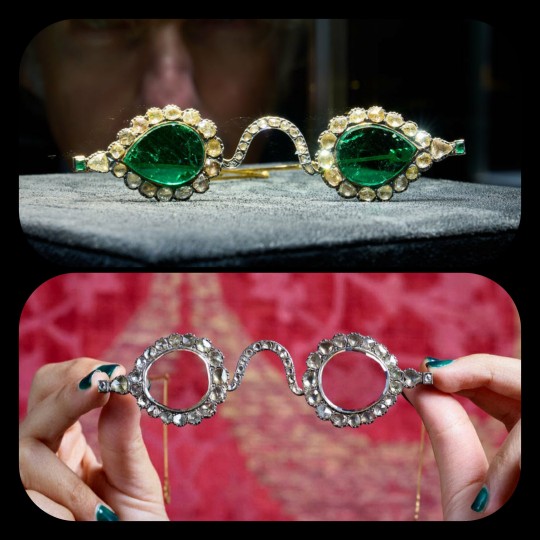
The Gate of Paradise and the Halo of Light were both kept in the collections of a wealthy Indian family until 1980, when they were sold to private collectors, and they were then put up for auction once again in 2021. They were most recently valued at about $2 million to $3.4 million per pair.
Sources & More Info:
Sotheby's: Mughal Spectacles
Architectural Digest of India: At Sotheby's auction, Mughal-era eyeglasses made of diamond and emerald create a stir
Only Natural Diamonds: Auspicious Sight & the Halqeh-e Nur Spectacles
The Royal Society Publishing: Cleaving the Halqeh-Ye Nur Diamonds
Gemological Institution of America: Two Antique Mughal Spectacles with Gemstone Lenses
Manuscript: From Satan's Crown to the Holy Grail: emeralds in myth, magic, and history
CNN: The $3.5 million Spectacles Said to Ward off Evil
BBC: Rare Mughal Era Spectacles to be Auctioned by Sotheby's
#history#archaeology#artifact#mughal#india#17th century#art#emerald#diamond#glasses#indian lore#islam#religion#mysticism#indian history#anthropology#spirituality#fashion
5K notes
·
View notes
Text
Deities in Hinduism 🛕
Hinduism is the largest religion in the Indian subcontinent, and the third largest religion in the world. Hinduism has been called the "oldest religion" in the world, and many practitioners refer to Hinduism as "the eternal law" (Sanātana Dharma). The faith is described by some to be monotheistic, where all deities are believed to be forms of Brahman, the Ultimate Reality, as popularised by the Advaita philosophy.
"A Hindu can choose to be polytheistic, pantheistic, monotheistic, monistic, even agnostic, atheistic, or humanist."
1. Lord Vishnu
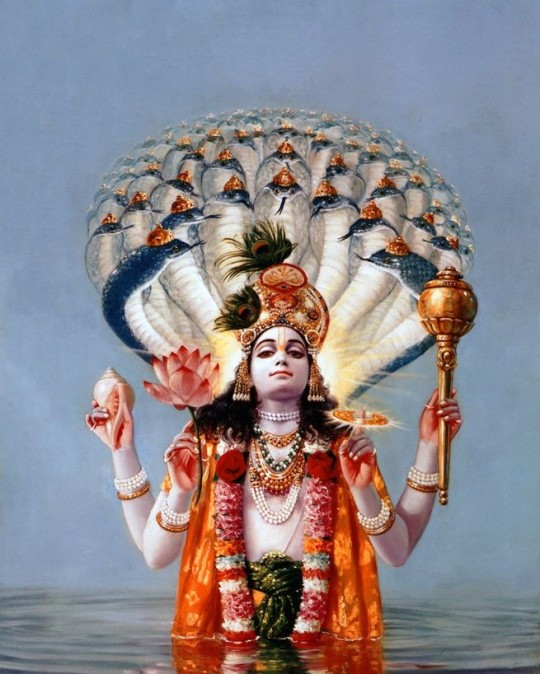
Vishnu is the god of Preservation, the great maintainer who often appears in various incarnations (avatara) to provide salvation for humanity. Some of his best-known avatars, who are tremendously popular and beloved throughout Hindu India, are the gods Krishna and Rama.
2. Lord Shiva
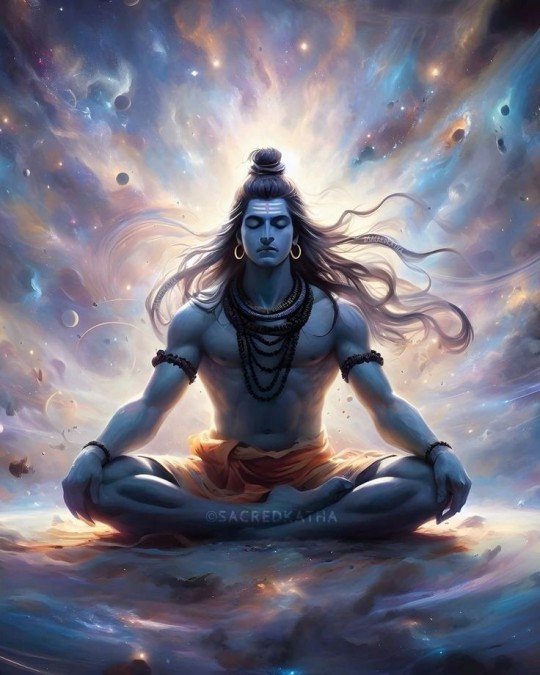
Shiva holds one of the most prominent roles in Hinduism as the god of destruction. He is one of the three most important gods, alongside Brahma (the creator) and Vishnu (the preserver). The sect of Shaivism holds that Shiva is the Supreme Being which all other gods are aspects of.
3. Maa Kali
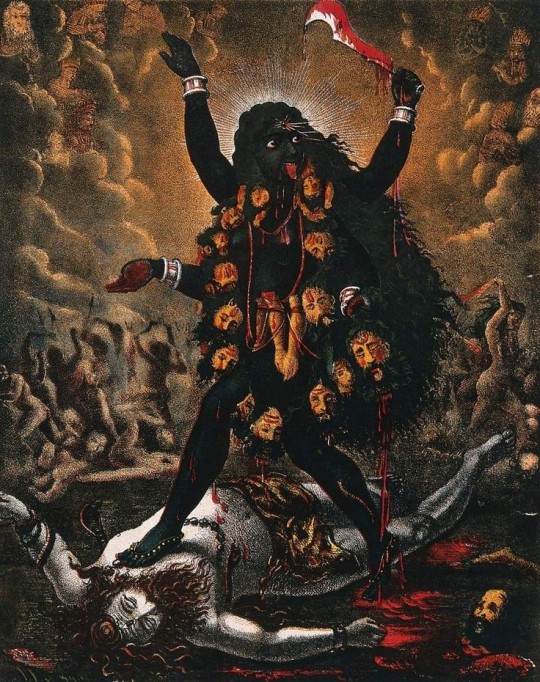
Kali is the Hindu goddess of death and rebirth, she expresses the dual nature of the destruction that must come before new beginnings, and of the strength of the female power which can sometimes do what the man cannot. She is also the goddess of time.
4. Maa Durga
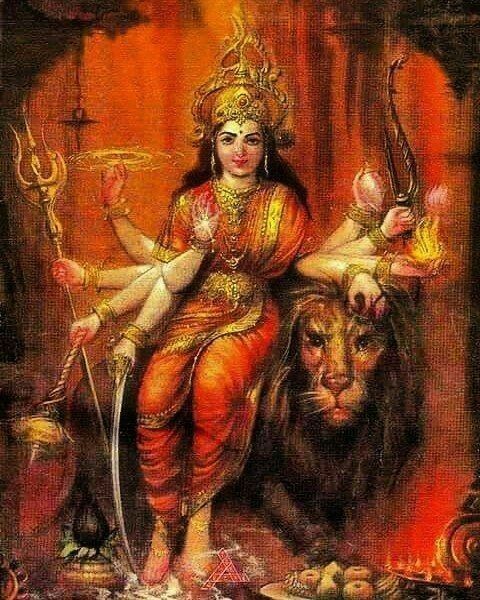
Durga, goddess of Shakti - the divine positive feminine energy and focus of festival celebrations. This very elegant bronze figure of Devi (goddess) Durga - is an attractive and prominent figure and a principal deity in Hinduism.
5. Lord Ganesha
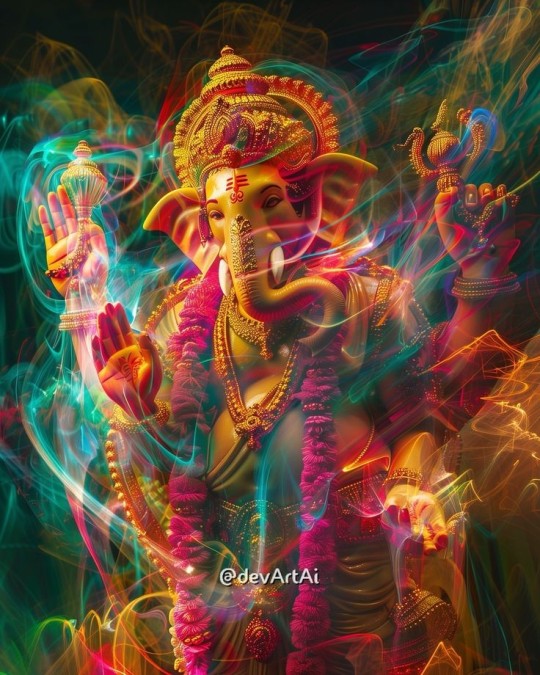
He is widely revered, more specifically, as the remover of obstacles and bringer of good luck; the patron of arts and sciences; and the deva of intellect and wisdom. As the god of beginnings, he is honoured at the start of rites and ceremonies
6. Maa Saraswati

Saraswati is the Hindu goddess of knowledge. She is associated with wisdom, music, art, and learning. She is one of the three main goddesses of Hinduism, along with Lakshmi and Parvati. Together the three goddesses are called the Tridevi.
7. Maa Lakshmi

Lakshmi is the Hindu goddess of wealth, good fortune, happiness, youth, and beauty. She is the wife of Vishnu, the god that sustains the universe; he makes sure the universe stays together while Shiva, the destroyer, rips it apart.
#tarot reading#tarot spread#tarot cards#tarot blog#tarot#pick a card#pick a pile#tarot and astrology#tarot community#tarotblr#tarot asks#tantra#hinduism#hindublr#sanatandharma#tarot justice#tarot journal#the divine masculine#tarot divination#spiritual disciplines#future spouse#kashmiri hindus#channeled message#tarot blr#tarot beginner#future spouse reading#indian goddess
237 notes
·
View notes
Text
Ramayana No. 10: Narada: The Celestial Sage and Divine Messenger of the Ramayana
As I continue my journey through the Ramayana, I’ve chosen to explore this epic using multiple versions: the abridged Valmiki translation, the comprehensive Gita Press edition, and the detailed Debroy translation. This approach allows me to compare different interpretations and uncover nuances that might otherwise go unnoticed. For those interested in exploring these different versions, both the…

View On WordPress
#ancient scriptures#Bhakti#comparative religion#comparative study#Dharma#divine messenger#Divine Wisdom#epic literature#Gita Press#Hindu epics#Hindu mythology#Hindu sages#Hindu texts#Hindu tradition#Indian literature#Indian spirituality#Mythology#Narada#Narada Bhakti Sutra#Ramayana#religious studies#righteous living#Sacred texts#sages#spiritual growth#spiritual guide#Spiritual teachings#Valmiki#Vedic wisdom
0 notes
Text
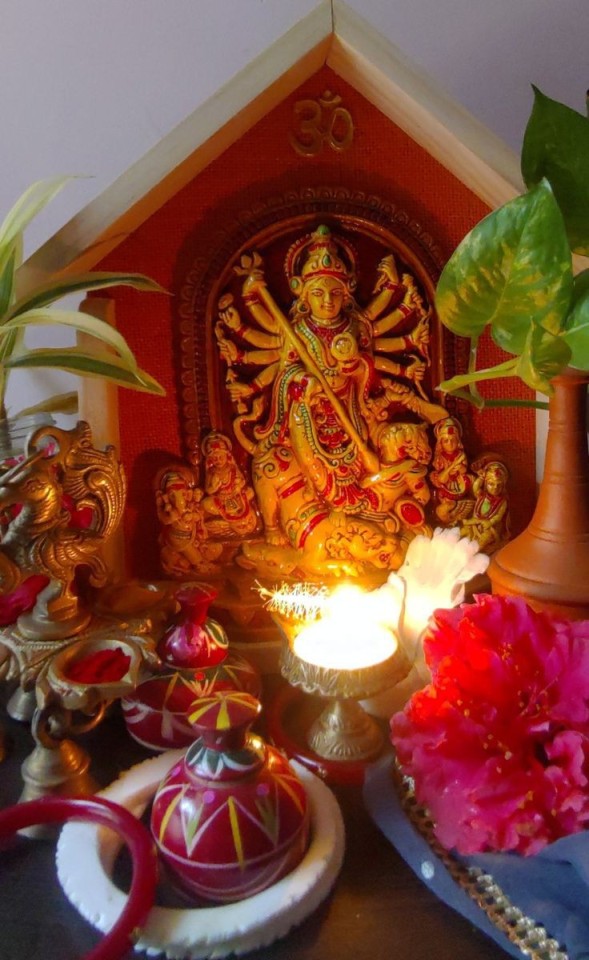








Celebrating the Divine Power
Navratri is not just about dancing and festivities; it's a profound reminder of the importance of women and a call for respect. It urges us to recognize the strength within us and stand up for our rights, dreams, and desires.
#desiblr#desi tumblr#desi girl#desi tag#being desi#desi humor#desi aesthetic#desi#desi academia#goddess kali#indian goddess#goddess durga#desi moodboard#desi core#desi culture#brown girls#indian culture#indian festival#indian#shringar#indian beauty#hindu mythology#hindublr#hinduism#goddess#desi messy moodboard#spiritual moodboard#woman empowerment#orange moodboard#navaratri
145 notes
·
View notes
Text

Lord Shiva, Mahadev, Bholenath, Adiguru 💙🔱
The best teacher of spiritual growth and transformation.
With his third eye, he sees beyond the illusions of the world, and his trident represents the power to destroy ignorance and ego.
His crescent moon is control of one's mind, and his serpent garland signifies the transmutation of poison, overcoming evil.
As the destroyer of the universe, he teaches us that transformation is necessary for rebirth and renewal.
With his teachings, we can learn to embrace change, let go of attachments, and find inner peace in the midst of chaos.
#lord shiva#mahadev#hinduism#desiblr#indian witch#yoga#kundalini#guru#spiritual growth#spiritual guidance#spiritual awakening#chakras#third eye#psychic#deity#quotes#spirituality#spiritualgrowth#spiritual journey#witchcraft
95 notes
·
View notes
Text

Victor's Way. Indian Sculpture Park-Wicklow, Ireland.
#Victor's Way#indian sculptures#park wicklow#ireland#reddit#photo#photography#creature#evil#unsual spiritual#park#sculpture park
782 notes
·
View notes
Text








Hope you all have a Sizzling Monday Morning 😊
.
.
.
#ms_jothipriya_deepanrane #Fashionista #Smile #FeelingMyself #ipl2024 #analvibratör
100 notes
·
View notes